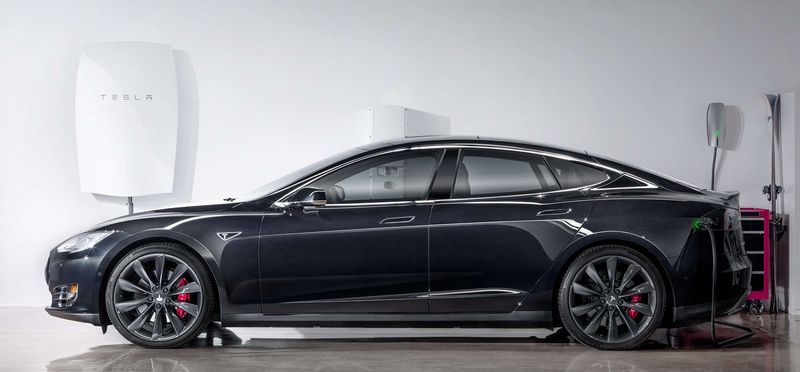It is finished! Tesla introduced the battery system for home, businesses and the world

The company Tesla, as planned, introduced the Tesla Energy battery system , which can work at home, in the office, and at the enterprise. In this case, two different types of systems are represented: Powerwall and Powerpack .
As for Powerwall , the company has released two models: 10 kW ($ 3,500) and 7 kW ($ 3000). The dimensions of the system are about meter per meter, with a thickness of about 18 centimeters. Powerwall comes with support for home heating control and the ability to control via the Internet. Batteries can be charged either from a solar battery or a wind generator (if installed), or from a stationary source of electricity.
What can give the installation of such a system at home? Here are a few options. The first is the accumulation of 15 kWh of energy from renewable sources (if available), which allows you to save excess energy, rather than donate it to the network (for this, energy companies sometimes pay, sometimes not). In addition, the system battery can be charged at hours when energy is the cheapest, and use this energy when power companies supply it at the maximum price.
')
Powerwall features
- Installation: wall, in the building or on the street;
- Inverters: compatible with a large number of systems;
- Energy: 7 kWh or 10 kWh
- Medium: 2 kW
- Peak: 3 kW
- Voltage: 350 - 450 V;
- Current: rated 5 A, peak value 8.5 A;
- Operating temperatures: from minus 20 to plus 43
- Warranty: 10 years
- Weight: 100 kg
- Dimensions: 1300 mm * 860 mm * 180 mm
The average American household consumes 30 kWh of energy per day, which means that it is possible to provide the right amount of energy during peak hours and the time when energy is the most expensive. There are also UPS systems in the system, which will make electricity in your home or office even when there is a problem with the local energy infrastructure.

In the presence of alternative energy sources, your house with the installed Powerwall system can be made completely autonomous, independent of the fixed grid.
Powerpack is the “big brother” of Powerwall, a system that is designed for businesses. This system can be scaled, and even work in a large enterprise. Thus, 100 kW units can be combined into a system from 500 kW to 10 MW.
At the presentation of the new systems, Ilon Mask also mentioned the “Gigafabria of batteries”, which will be able to produce 50 million kWh of batteries per year by 2020. According to Mask, 160 million Powerpacks will be enough to provide energy to the entire US, and 2 billion of these systems will be enough for the whole world.
The Powerwall system underwent various tests, working "in the field," this system has already received some customers. Sales start in the summer. As for the Powerpack, Tesla will start accepting orders later this year, while active sales will begin with the commissioning of the Gigafabrika.

It is worth recalling that earlier in the invitation, Tesla posted a photo of an object, and wrote that the “missing part” would be presented at the meeting. At Geektimes, it was suggested that it could even be a smartphone , or some special glass for Tesla electric vehicles.
Earlier it was reported that the price of the system at ~ $ 3000 is the cost of rent for 10 years. Powerwall costs about $ 13,000, but Tesla decided to accept an initial payment of $ 1,500, followed by a breakdown of payments for 10 years, with a monthly payment of $ 15. Part of the cost of the system will be compensated by energy companies that support the idea of the widespread introduction of battery systems that can reduce the peak loads on the energy infrastructure of cities and regions.
Source: https://habr.com/ru/post/374995/
All Articles